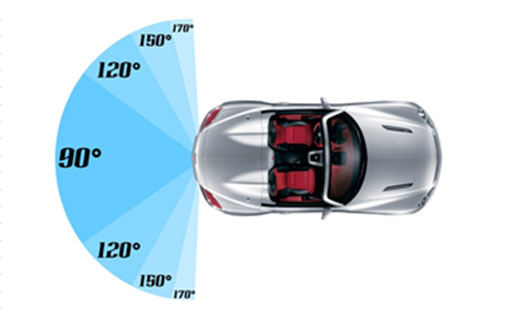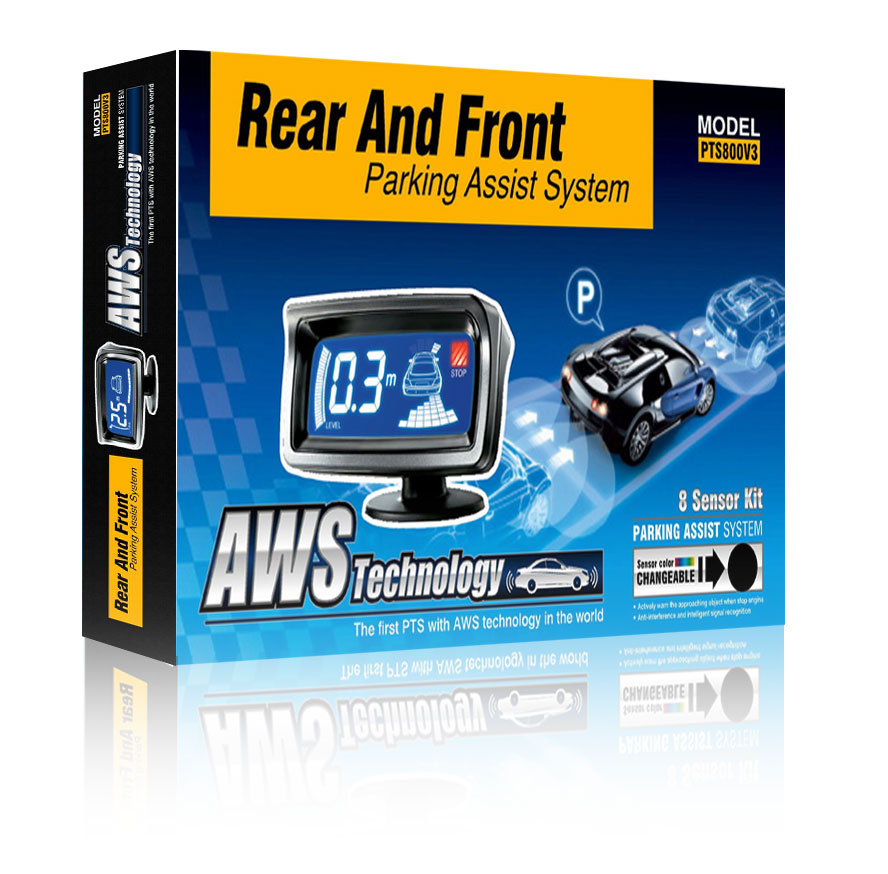Glossary
Parkmate Parking SensorsParkmateHD TechnologyParkmate sensors are the next best thing to a personal valet. They are developed by the world’s leading sensor manufacturers. Parkmate helps you not only to park your vehicle, but also prevent accidents. During parking, systems employ sensors to detect nearby objects that might not be in your field of view, by using audible signals and illuminated displays to help you park. If your car approaches too close to an object in the detection zone, an alarm sounds, increasing in intensity in proportion to distance from the object, simultaneously displaying the direction and distance.  |
|
Can the sensor be painted to match the car?Yes, all Parkmate parking sensor heads are able to be painted. A light coat of paint is all that is recommended. They do not require priming prior to being painted, just a light sand to scuff the surface. Warnings and AlertsAll Parkmate parking sensor kits come with an alert device either as a display or beeper, or in some kits both. Models with a display show the distance via LED indicator bars or by distance. Some display kits also announce the distances from objects. All kits come with an audible beeper alert. Intelligent DetectionAll Parkmate parking sensor kits feature tow bar/spare wheel detection to prevent false arming when parking. This is a programmable feature which avoids only the tow bar or spare wheel and continues to work as normal past that point. Ideal for 4WD vehicles. Self Test FunctionThe system automatically performs a self-test on all sensors every time it starts up, thereby enabling the user to be given a warning beep to alert them if a sensor is failing to operate properly. Tapered Water ChannelAll Parkmate parking sensors kits have a uniquely designed water channel in the face of the sensor, allowing any excess water travel through the bottom of the sensor to prevent false warning. Can I fit sensors to the front of my vehicle?Yes, Parkmate have a specially designed front sensor kit, the sensors are generally mounted on the front bumper bar and are activated by pressing the foot brake. The angle that the sensors respond to on this kit are designed for front use which differs from the rear kit.
|
|
Parkmate Reverse CamerasWhats the difference between CMOS, CMD & CCD Cameras?There are two different types of Reverse Cameras which are based primarily on the differences between image sensor technology, those being CMOS (Complementary Metal Oxide Semiconductor) or CCD (Charged Coupled Device). CCD cameras are the better of the two types as they use digital technology and have higher clarity especially in low light viewing conditions. CMOS cameras are the cheaper of the two and use analogue technology which is generally of a lower resolution to a CCD camera and is considerably slower to react to low light conditions. CMOS cameras can also come with a CMD sensor which is a high definition sensor that offers better clarity than a standard CMOS camera but about the same night visibility. Some cameras feature Infra-Red sensors with LED’s fitted to them. IR sensors are mainly found on CMOS cameras as they act in a way that use sensors to draw in light to improve visibility, the downside is that in pure daylight the image can “ash out” due to too much light being drawn in. These cameras are generally used on vehicles that have the camera mounted far away from the reverse lights, including trucks and other large vehicles. Viewing AngleThere is a noticeable difference in the viewing angle between cameras mainly due to the size of the lens. Generally, cameras use either a 1.7mm or 2.8mm lens for the greatest viewing angle. Some cameras have a larger lens and offer a greater viewing distance but tend to be limited on viewing angle. CMOS cameras can also be prone to a fish-eye appearance due to a high viewing angle but lower sensor technology. LUX RatingThe LUX rating on cameras refers to its sensitivity to light, the lower the LUX rating the better the camera responds to low lighting conditions. You may see some CMOS/CMD cameras with lower LUX ratings than CCD cameras, this is due to the picture quality of a CCD camera being far superior to the CMOS camera and not needing to be as sensitive to light. Audio CapabilityThere are not a lot of cameras on the market that feature audio playback capability. It is mainly found in more robust truck styled cameras. They can be used to assist a driver when getting directions while reversing when there is a great distance between the driver and the rear of the vehicle. Weather-ProofingThere are 2 different types of weather proof ratings available for reverse cameras, both dust and water. IP67/68 rating refers to a water proof rating, this allows for the camera to be submersible to a pre-determined depth suitable for vehicle applications. All cameras with this water rating exceed the dust rating for vehicle applications. Cameras are NOT able to be cleaned using high pressure water cleaners as this pressure exceeds the IP rating. Being used in salt water will also void warranty. |
|
What is AWS (Active Warning System) Technology?Parkmate’s PTS800V3 is the world's first PTS with an active warning system. The system actively warns any vehicle approaching towards your parked car by the indicators flashing or horn chirping. When your car is parked with the engine off the system becomes active. When the system detects an approaching vehicle that gets as close as 1 metre, the indicators begin to flash to warn the approaching vehicle. If the vehicle continues to approach your car under 1 metre, the indicators flash & the horn chirps. |
|
|
DVR TechnologyDVR Technology stands for Digital Video Recording. The technology that is used in our Kapture range will record video input onto the SD card that is inserted into the camera DVR system. |


